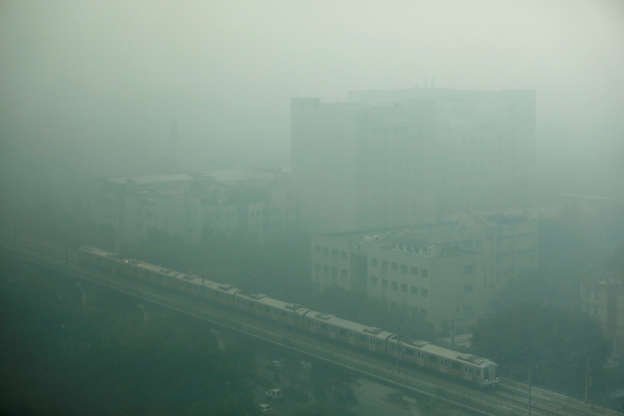The use of public transportation should be reduced by 30%, and Delhi residents should be more cautious when spending time outside.
Smog in New Delhi has worsened as temperatures and wind speeds have decreased, prompting the central pollution control board to urge states and local governments to prepare for emergency measures. Toxic smog blanketed Delhi, which was exacerbated by an increase in farmland crop waste burning. The pollution control board reported that visibility had decreased and the Air Quality Index (AQI) had risen to 470 out of 500.
This level of pollution will have an effect on both healthy people and those who are already sick. According to the pollution board’s “Graded Response Action Plan,” states and local governments must implement emergency measures such as closing schools, imposing ‘odd-even’ restrictions on private cars based on license plates, and halting all construction for 48 hours.
According to the board’s directive, government and private offices should cut their use of private transportation by 30%, and residents should limit their sun exposure. This is because pollutant dispersion will most likely be hampered by low winds and calm weather conditions at night until November 18, 2024.
Brick kilns were shut down earlier this week, as was mechanised cleaning and a crackdown on garbage burning and dust.
The concentration of the pollutant PM2.5 in the air averaged 329 micrograms per cubic metre.
The government considers PM2.5 levels of 60 micrograms per cubic metre of air over a 24-hour period to be “safe.”
Particulate matter 2.5 (PM2.5) can cause lung cancer because it is small enough to enter the bloodstream and travel deep into the lungs.
“This is turning into a nightmare,” says Gufran Beig, SAFAR’s founder and director. SAFAR keeps track of air quality and weather conditions. The number of crop stubble fires in and around the capital is not decreasing, according to Mr Beig, who is referring to the number of fires that have broken out.
Over the last four years, India has spent billions of rupees to reduce crop waste burning, a major source of air pollution during the winter, but this has not prevented a significant deterioration in air quality. The air quality in Delhi, which is frequently ranked as the world’s most polluted capital, is extremely poor in the winter due to crop stubble burning, emissions from transportation, coal-fired plants outside the city, open garbage burning, and dust.


